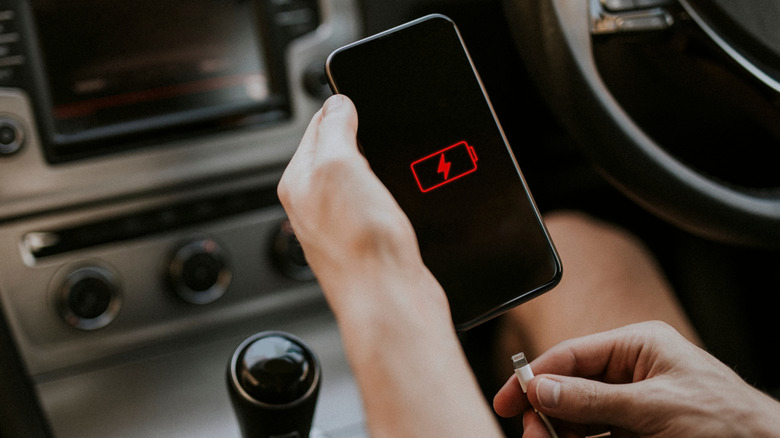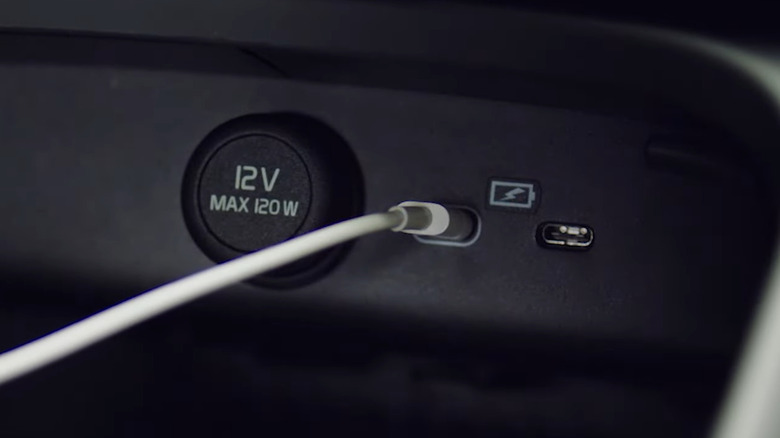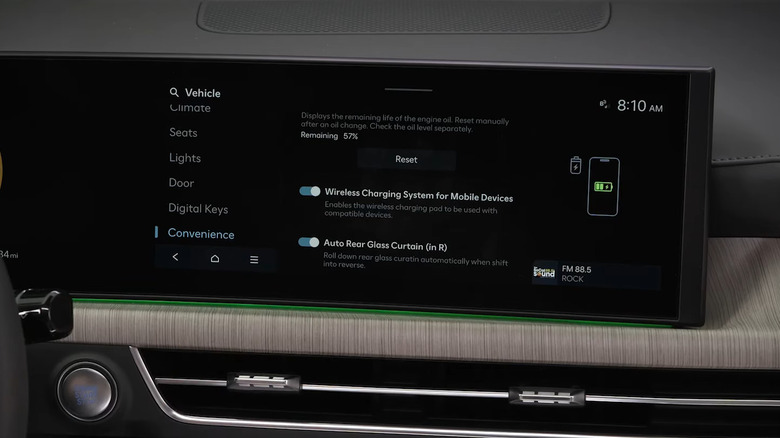Phone Won't Charge In Your Car? This May Be Why (And Fixes To Try)
There's a lot you can do with the USB ports in your car, but the most common use case is charging your devices, such as your phone. This allows you to power your phone as you commute, so you don't have to worry about the battery draining when using features like Android Auto or Apple CarPlay. But what if you plug in your Android or iPhone to your car's USB port, and it doesn't charge?
A common reason for this is a loose or improper connection. This can be caused by dirt or dust particles inside your car's USB port. You can use a soft bristle brush and a can of compressed air to clean the USB port. It's best not to use anything sharp like a metal pin, as it can permanently damage the USB port. Similarly, you should also check your phone's charging port for any debris. If you find anything, clean your Android or iPhone's charging port as well. Once both ports are clean, plug your phone back into the car's USB and see if it starts charging.
While all the USB ports in your car may look the same, that doesn't mean all work the same. It's possible that the USB port you're using to charge your phone is only capable of transferring data. If that's the case, simply switch to a different USB port in your car and your issue will be solved.
What to do if your phone won't charge via the car's USB port
Just like the USB port, the cable you use also plays a crucial role. A low-quality or damaged cable might not deliver enough power to charge your phone. You can try switching to a USB cable that came with your phone, or use one from a reliable brand.
Your car relies on firmware to communicate with smartphones and other devices you connect to it. If the firmware is outdated, you could experience problems with your car's USB ports. You can try updating your car's firmware (if that's an option for your car) to see if that helps. This can be done by using a USB flash drive or by downloading the update over the internet. For exact steps, you can refer to your car's user manual.
In some cases, your Android or iPhone may show the charging icon when plugged into your car's USB port, but the battery percentage may still drop over time. This often happens because of low-power output from the USB ports in your car. Additionally, if you're using your phone for navigation and other activities while charging, the power from the USB port may not be enough to keep up with the demand. To avoid this, you should use a dedicated car charger that plugs into your car's cigarette lighter socket. These chargers can deliver up to 5A of power, which is good enough to charge any smartphone.
What to do if your phone won't charge wirelessly in your car
Being able to charge your phone wirelessly in your car is quite convenient, but it can fail to work for several reasons. For instance, a thick protective case or other items on the charging pad can interfere with the connection. Some vehicles also include the option to disable wireless charging through the infotainment system, so it's worth checking the settings to ensure the feature is on. Once enabled, try lifting the phone and placing it back on the charger. If you're using a small or foldable phone, you'll need to ensure it aligns properly with the center of the charging pad. Even then, it could easily slide around as you drive. In some cars, you may see an error message if the phone isn't lined up properly on the charger.
Another common problem with wireless charging is that it causes your phone to heat up. If your phone is exposed to direct sunlight, or you're actively using it, it may overheat and stop charging. In such cases, you may also see a warning message on your Android or iPhone. If this happens, simply wait for the phone to cool down, and the charging should resume automatically.
If your phone doesn't charge either through a cable or wirelessly, there may be an issue with your car's fuse or electrical system. In that case, your best option is to take your car to an authorized service center for inspection.


